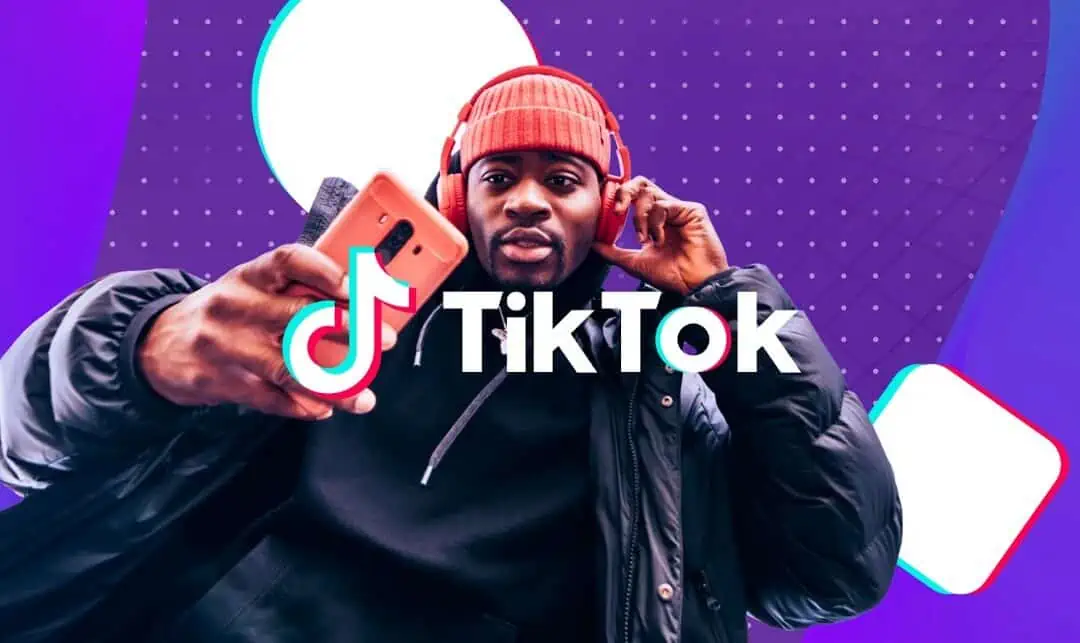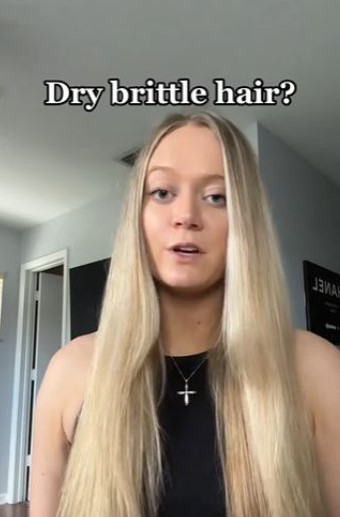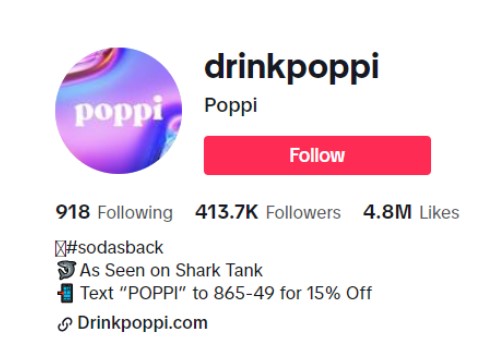How TikTok’s Algorithm Works in 2024 [& 15 Tactics to Go Viral]

TikTok has captured the imagination and attention of countless millions all over the globe, inspiring quite a few dances and ‘challenges’ along the way. From its humble beginnings in 2016, to securing its current spot as the most downloaded app in the world, the platform has certainly come a long way in a short time.
TikTok celebrated reaching 150M US users in 2023, representing just 15% of their ~1B users worldwide. The majority of TikTok Users in the US are between 18 and 34 years old, but the overarching audience is not without variety.
TikTok users span a wide range of ages and locations, with each individual user having their own preference for what type of video content they are most interested in seeing. As for determining what content to show which users and when? That’s where the TikTok algorithm comes into play.
The TikTok algorithm determines what shows up in a user’s “For You Page” (FYP) on the app. The FYP is personalized for each user, with every feed being unique. Similar to how many other social platform algorithms function, the videos a user will see in their For You feed will change over time as TikTok better understands their interests based on their viewing preferences and habits.
This is how TikTok explains feed curation:
“The more you engage with videos on the app, the more personalized your recommendations become. From the moment you start your TikTok journey, your first set of likes, comments, and replays will initiate recommendations as the system begins to learn more about your video tastes. These recommendations should become increasingly more personalized over time. Following new accounts, exploring hashtags, sounds, effects, and trending topics will all help to refine your feed.”
TikTok has been secretive about its algorithms in the past, which has led to much speculation about the factors that affect how the FYP is populated. That changed in June 2020, when TikTok published a blog post detailing how the For You Page recommendations are generated.
According to TikTok, the For You Page’s algorithms are based on the preferences and activity history of individual users. That means no two For You feeds are going to be exactly the same, due to the sheer number of factors and variations involved; as the name implies, these recommendations have been carefully curated for you.
TikTok also strives to keep the FYP interesting and varied. Their recommendation system works to intersperse diverse types of content along with those you already love. For example, your For You feed won’t typically show two videos in a row made with the same sound or by the same Creator. That said, you will see content from Creators and other accounts you aren’t following, allowing you to discover new content that TikTok anticipates you’ll be interested in.
TikTok values the relevance of a Creator’s content (to your algorithmically determined interests) more than the popularity of any given account. For example, a video from Mr. Beast that isn’t at all relevant to you based on your behavior on the platform isn’t likely to show ‘just because’ his account is so popular. This also helps new accounts and Creators organically grow their presence on a busy platform.
However, while TikTok shared some information regarding algorithmic functions, they didn’t share everything. This means there’s still plenty of anecdotal speculation about how it works on a deeper level.
The “Batch Effect” is a popular theory among TikTok creators. In the Batch Effect, TikTok shows your video to different batches of people at different times. The way users react determines whether or not your content gets shared with more people. The more views and interactions your video gets, the bigger—and greater number of—batches see it down the line.
The time lag between different batches can take up to several days. Creators have observed that their video views often “jump” significantly after plateauing. This is speculated to be because the next “batch” has launched and their content has been exposed to more users.
Algorithms function in part by leveraging passive and active user signals to better understand which content will be of interest to a specific person. Passive signals might include how long you lingered on a video, or how quickly you scrolled past it. Active signals might include liking or sharing a video, or ‘disliking’ a video by choosing “Not interested.”
In ranking content, TikTok considers positive signals (reasons to think you will like content) and negative signals (reasons to think you won’t like content.) There are also some types of content that will never be recommended.
The 3 main factors that influence a user’s TikTok recommendations include:
In creating interesting content for TikTok, focus most of your attention on the first two factors: user interactions and video information.
User activity plays a significant role in determining which videos TikTok shows, with the following heavily influencing your For You feed:
Your goal should always be to create interesting content that will engage your target audiences, encouraging genuine interactions from viewers without being spammy.
For example: If you posted a video about your favorite skincare products to use for dry skin, you might ask viewers to comment with their personal favorites toward the end of your video. The comments they leave will help you better understand your audience while also serving as additional recommendations for other interested viewers.
What you wouldn’t want to do is spend half of your video time reminding viewers to like, subscribe, comment, and share. That is spammy low-value content only designed to game the algorithm into thinking it’s interesting, which over time the user interactions will prove is not the case.
This encompasses video attributes and data specific to individual videos, including:
Always provide TikTok and users with as much relevant information about your video as possible for elements including your caption text and hashtags so they better understand its contents.
Hashtags in particular are a major component of which videos are recommended. Any user that watches or creates a video with a specific hashtag will be more likely to see videos that use that hashtag in the future.
Help TikTok recommend the videos that will be most likely to resonate with your target audience by choosing highly relevant hashtags. Consider hashtags specific to the product itself as well as broader hashtags, such as those that represent a lifestyle or dietary choices.
For example, If you were posting a video reviewing a can of mixed nuts that you purchased and enjoyed, relevant hashtags would include the brand of the nuts, #mixednuts, and #snackreview.
Let’s assume that within the video, you mention the high protein content of the nuts, noting they’d make a great protein source for vegetarians. With that in mind, some examples of additional relevant hashtags would include #vegetarian, #vegetarianfood, and #plantbased.
Now let’s assume you talk about how mixed nuts are one of your hiking essentials, explaining at which points in your hike you usually stop to hydrate and nourish. Additional relevant hashtags now include #hikingtips and #packforyourhike.
The goal isn’t to think of every conceivable hashtag for which your video is at all relevant, rather to consider different aspects of a product or service in determining which audiences you want to reach and serve in your content.
Pro Tip: Find the most relevant and engaging hashtags for your content using TikTok’s official Trending Hashtags dashboard.
TikTok has confirmed that its algorithm takes device settings and account settings into consideration, but clarifies that these factors are not given as much weight as stronger, preference-indicative measures—such as likes and video plays—and that these factors are primarily tracked to optimize app performance.
Examples of device and account settings considered include:
Just as TikTok relies on signals to determine which videos are most likely to interest a specific user, they also consider signals in deciding what not to show.
TikTok is less likely to recommend your videos to users if a user on the app has done the following to your video, or a video that is very similar to yours:
TikTok is also unlikely to recommend potentially upsetting content, such as videos of a medical procedure.
The negative ranking signals mentioned above heavily influence which content is recommended most widely, but they don’t necessarily put up a wall. For example, users may be less likely to be served one of your videos if they’ve previously marked a similar video as “Not Interested,” but it’s still possible it will be shown—unless they’ve selected “Not Interested” on your video specifically.
Blocked content, on the other hand, is prevented from appearing in users’ FYP feeds. The TikTok algorithm aims to block the following content types:
Review TikTok’s Community Guidelines for more information about the platform’s content standards and rules.
There are many theories regarding how much your previous posts and your popularity influence your potential to reach audiences with every TikTok post. Before we dive into tactics that can help your videos go viral on TikTok, we want to address two of the most common misconceptions.
The number of total followers an account has does not result in their posts surfacing higher, or more often, based on the functionality of the For You algorithm. Naturally, those who have a higher number of followers will have more overall visibility, but their posts are not given preferential treatment based on the posting account’s popularity.
Your track record of high-performing versus low-performing videos does not impact placement. This means that a TikTok video from a creator with a high number of followers—and/or with a history of high-performing videos—will not, based on those factors alone, get recommended more often than a video from a newer creator with less followers, and/or lower-performing videos.
Videos are measured and recommended based on their own merits, not the merits of their creators.
The relevant passage in TikTok’s blog post states:
“While a video is likely to receive more views if posted by an account that has more followers, by virtue of that account having built up a larger follower base, neither follower count nor whether the account has had previous high-performing videos are direct factors in the recommendation system.”
Now that we have more insight into how TikTok’s algorithm works, the next step is to leverage that information to design videos poised for maximum exposure.
With more than ~1B people regularly logging in across the globe, the number of popular subcultures on the platform only continues to grow. Take some time to learn more about the subcultures/interest groups active on TikTok, entrenching yourself in those that align with your business.
Tailoring your content to serve the preferences of a relevant subculture will increase your chances of reaching those audiences while also increasing awareness, consideration and ultimately conversions with consumers who have a high propensity to purchase.
Some popular subcultures that might be relevant for your brand or business in niching down on TikTok include:
These are just a few examples of the countless growing communities on TikTok. Other popular communities that help advertisers niche down to reach the most qualified audiences include BookTok, CarTok, and FarmTok.
TikTok knows their content is only as valuable as the communities that create, participate, and share in it. TikTok does a great job of curating video content based in part on specific hashtags that a user frequently engages in. Find the niches that make most sense for your business or brand and review the hashtagged content to see what others are creating, and what viewers respond best to.
You might be surprised to learn that you only have about three seconds to hook a viewer on TikTok. With that being said, you’ll need to test and explore captivating ways to get [and keep] your viewers’ attention. The good news is that if you are able to grab a user’s attention, you might be able to keep them for up to 10 minutes.
“We’re always thinking about new ways to bring value to our community and enrich the TikTok experience. Last year, we introduced longer videos, giving our community more time to create and be entertained on TikTok. Today, we’re excited to start rolling out the ability to upload videos that are up to 10 minutes, which we hope would unleash even more creative possibilities for our creators around the world.”
– TikTok, March 2022
The goal of a well-crafted hook is getting people to stop scrolling because they want to see and hear more, and that doesn’t always mean starting at the beginning of a story. Once you have their attention and they’re sure they’re interested in where the video is going, then you can take it from the top.
For example, in this video that offers tips for dealing with dry, brittle hair, the Creator has added clear, concise text to their video so even those with sound off will know what the video is about as they scroll.

The Creator also uses the first few seconds of the one-minute video to very clearly explain what they’ll be discussing, opening with, “Do you have dry, brittle ends, and you feel like your hair deals with a lot of breakage?”
Although TikTok is a video-based platform, users should be mindful of creating clever and engaging captions. The maximum length for captions is 2,200 characters, but brevity is often best. Also consider that users will only see the first sentence or so without having to tap to expand for your full message, so put the most important information first.
Just like you optimize landing pages on your website for discoverability by search engines like Google, you’ll also want to search-optimize your TikTok videos. This is especially important in reaching younger audiences, many of whom start their searches on TikTok. Optimizing your videos for the best organic reach works in perfect complement with a TikTok advertising strategy.
Some TikTok SEO basics include…
One example of success is e.l.f. Cosmetics, a cruetly-free makeup beauty brand who leaned into TikTok’s recommendation engine to generate awareness, driving a 56% reduction in CPA. Want to learn more? Check out how Tinuiti and e.l.f. worked together to boost the beauty brand’s impressions by +63% year over year using strategic cross-channel audience targeting.
TikTok is a video platform, and piecing together still images to create that video isn’t going to work here. Some videos you’ve created for other social platforms may work well, but carefully consider the differences in the audiences and platforms themselves before repurposing.
The good news is that TikTok is more specifically a casual video platform, meaning you don’t need more than a camera phone to create videos that will fit in seamlessly on any FYP—as long as the visuals and content of that video are clear and compelling. In short, your content doesn’t have to be highly polished, but it should be genuine and valuable if you want it to gain traction or even go viral.
Be sure to follow TikTok’s video specs to ensure parts of your overlay don’t interfere with your video, also ensuring your audio is high-quality; videos should be shot 9:16 (with sound).
If there’s any dead space in your video that might cause users to become disinterested, try editing that out to convey your message as quickly and comprehensively as possible.
Another tip to keep in mind is that once you get the ball rolling, you have to keep the content flowing. According to TikTok, “In order to captivate new audiences, the key is to continuously share fresh and diverse content. Aim to post 1-4 times per day to test how different types of content are received. You can then add a paid boost to get the most out of your top-performing content.”
To make your content more accessible to all TikTok users, consider best practices as it relates to inclusivity. Features like text to speech and auto captions expand the opportunity for more people to enjoy your videos. Text to speech “lets you convert typed text to a voice-over that plays over the text as it appears in the video,” and is currently available in select countries with more to follow. Auto captions will be launching soon in select countries, and will automate the subtitle generation process.
Initially designed to provide TikTok users who are deaf or hard-of-hearing with better access and a more comprehensive understanding of what’s shown and discussed in the video, there are also many people who simply prefer to swipe sans sound. Some reports indicate that users who include TikTok closed captions have seen an improvement in social media engagement and overall discoverability.
The algorithm rewards videos that are watched from start to finish, so aim to keep at least some of your videos short to increase your chances that users will complete them; 5 to 15 seconds is a good target to shoot for.
A side benefit to shorter videos is that you’re trimming your content to be punchier and more concise. This can improve the quality of your videos and increase their chances of getting attention.
Increase your visibility and video shareability by using effects. Trending effects should have the greatest impact due to their popularity among the user base, and because TikTok will be actively promoting videos that use those effects.
Filters and effects are used to make your videos more compelling and engaging for viewers. TikTok offers creators and brands a wide variety to choose from, and regularly releases fresh, new options.
A TikTok Business Account gives you access to detailed reports that tell you when your audience is the most engaged, and what your audience considers high-quality content, helping you create more effective TikToks. Some analytics information is also available for Personal and Creator accounts.
To access your TikTok Analytics:
Most TikTok creators already know the value of #hashtags, but popular hashtags and hashtag challenges can have a significant impact on your video’s visibility. If you’re looking for popular hashtags to use, you can find trending hashtags in the TikTok Creative Center, and right on your Discover tab.
Prioritize hashtag challenges that use trending effects for best results, always ensuring they are relevant to your brand.
Examples of popular branded hashtag campaigns:
Clothing and accessories brands also commonly encourage certain hashtags by adding “#ShowUsYour” or a similar phrase to the front of their brand name, including it in their profile. They also might include a hashtag that is associated with their brand messaging, and would make sense for users to include in their captions for videos that include the product. Poppi’s #sodasback is one such example of a TikTok hashtag campaign.

Don’t just sit back and pump out videos—this is “social” media, after all! TikTok is a community, and showing others’ support can go a long way toward helping them, and you.
Like and comment on videos from other creators; engagement is the most important factor in TikTok’s algorithm. Creators are likely to benefit from your contribution and appreciate your efforts – and they may even return the favor when you publish new videos!
Other users often appreciate when brands join in the conversation as well, showing that they don’t just log in to post their own content and then hop off. It can also show that you’re genuine in your brand promise and mission, particularly if you’re engaging with other accounts and creators that align with one or more of your niche audiences.
For example, let’s assume you are a skincare brand that offers some products tailored to people with eczema. In addition to engaging with Creators and influencers who post related content, you could also expand your reach—while showing authenticity—by engaging with videos related to advances in eczema research, or recommended foods and supplements for those dealing with the condition.
Also—don’t neglect your own comments! Be sure to reply to questions and feedback quickly and thoughtfully.
Want to learn more? Check out how Liquid I.V. leveraged full-funnel solutions and tapping creators to drive a +48% increase on ROAS.

Whenever a user likes a video, the TikTok algorithm shows them other videos that use the same music or sound. This means that sounds can trend the same way that hashtags and effects do.
Trending sounds can be found on the Sounds tab in your video editor, and on the For You Page. You can also explore TikTok Creative Center to find trending songs for specific demographics, regions, audience interests, and more.
Try to publish videos when your followers are most active. This will help your videos generate more engagement faster, which increases the velocity of the video and gets it shown to more users. You can access information about your audience’s activity by checking your Followers tab.
Unless you have a specific reason for deleting old videos, we recommend keeping them around, even if they haven’t earned the same exposure as more recent content. Because the TikTok algorithm does not use data from a creator’s other videos to determine ranking for new videos, each video is evaluated on its own merits. In short, your weaker videos are not “dragging you down.”
In fact, older and/or underperforming videos may have a chance of going viral. The Batch Theory implies that videos are still going to be shared among different groups; if this theory works the way many users expect, it would only take one new click for the video to start gaining potential velocity. There is anecdotal evidence of videos going viral after extended quiet periods.
As large a social force as it may seem TikTok already is, they are still a newer platform by comparison, with an abundance of opportunity on the organic and TikTok advertising front.
Want to learn more about how to make the best use of TikTok for your brand? Contact us today to ‘tok’ with an expert!
Editor’s Note: This post was originally published in April 2021 and has been regularly updated for freshness, accuracy, and comprehensiveness.
